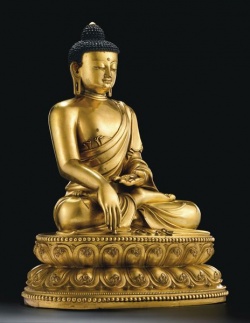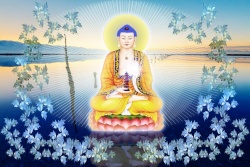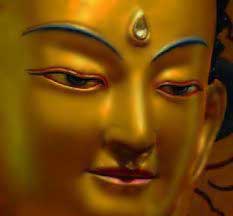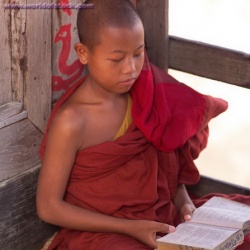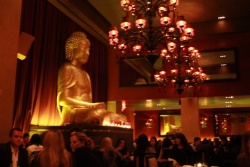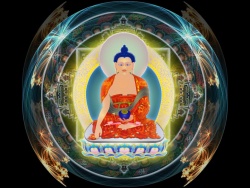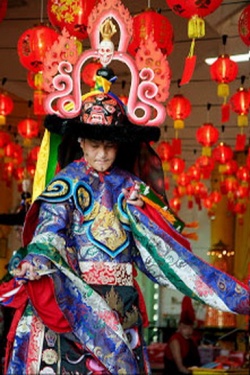Patriotism, Secularism, and State Shintō
===Bibliography===
===Ama Toshimaro.===
Why Are the Japanese Non-Religious?
Lanham, MD: University Press of America, 2005.Armstrong, Robert Cornell. "The Religious Value of Shintō."
In
===The Japan Evangelist===
23.11(November 1916), pp.429-433 . ——. "Shintō as a National Cult". In Edwin Taylor Iglehart (ed.)
The Christian Movement inthe Japanese Empire ... A Year Book for 1918.
Tokyo: Fukuin Printing Co., 1918.Breen, John. "Ideologues, Bureaucrats and Priests." In Breen and Teeuwen,
===Shintō in History.===
Breen, John and Mark Teeuwen.
Shintō in History: Ways of the Kami
Honolulu: Universityof Hawai’i Press, 1990.Burns, Susan L.
===Before the Nation.===
Durham, NC: Duke University Press, 2003.Chamberlain, Basil Hall. “The Invention of a New Religion.” London: Watts and Co, 1912.Chamberlain had claimed in an earlier book that National Teaching ended thereligious period of Japanese nationalism. But here he claims that some kind of “religion” is resurgent. He does not define “religion” so his use of the term may have been figurative.Durkheim, Émile.
===The Elementary Forms of the Religious Life===
. London: George Allen, 1976.Dyke, Ken R. “Shinto: A Study Prepared by General Headquarters, SCAP, C I & E Section”.
Contemporary Religions in Japan
7.4 (1966)Evans (?), J.D.
===The National Cult in Japan===
(Kobe: Japan Chronicle, 1918)Evans-Pritchard, E.E.
===Theories of Primitive Religion===
Oxford: Clarendon Press, 1965.Fenton, Steve
Durkheim and Modern Sociology.
Cambridge: Cambridge U. Press, 1984.Fitzgerald, Timothy.
===The Ideology of Religious Studies===
. New York: Oxford U. Press, 2000. ——.
Religion and the Secular: Historical and Colonial Formations
.London: Equinox,2007. ——.
Discourse on Civility and Barbarity
. New York: Oxford University Press, 2007.Goodman, Carl F.
===The Rule of Law in Japan===
. Fredrick, MD: Kluwer Law International, 2008.Hardacre, Helen.
===Shintō and the State, 1868-1988.===
Princeton: Princeton U. Press, 1989.Haring, Douglas H. “Daniel Clarence Holtom 1884-1962”
.
===American Anthropologist===
65.4(1963).Hess, Andreas.
Concepts of Social Stratification: European and American Models.
NewYork: Palgrave Macmillan, 2001.Holtom, Daniel Clarence.
The Political Philosophy of Modern Shintō: A Study of the State Religion of Japan.
Chicago: University of Chicago, 1922. ——. "Review: The Religions of Japan in the Hastings 'Encyclopaedia'".
===The Journal of Religion===
3.2 (1923).Holtom was not the greatest fan of fellow Japanologist W.G. Aston, who saw state shrines asnon-religious. In a later book he seems to rewrite Aston’s views. ——. “A New Interpretation of Japanese Mythology and Its Bearing on the Ancestral Theoryof Shintō”.
===The Journal of Religion===
===6.1 (1926). ——. “The Christian Message and Shintō”===.
Japan Christian Quarterly
July 1927. ——. “The State Cult of Modern Japan”.
===The Journal of Religion=== 7.4 (1927).
71Re-Romanized from early 20 atakana]]; this is my best guess.
Although this is a complete discussion of “religiousness” with regards to the nationalshrine system, the term “State Shintō” is not used; he has not invented it yet. ——. “Modern Shintō as a State Religion.” In Paul S. Mayer (ed.),
===The Japan Mission Year Book===
vol. 28. Tokyo: Kyobunkwan, 1930. ——. “Recent Discussion Regarding State Shintō.” In Luman J. Schafer (ed.),
===The JapanMission Year Book===
vol. 29. Tokyo: Kyobunkwan, 1931. ——. “Japanese Christianity and Shintō Nationalism.”
The Christian Century
January 7,1942. ——. “Shrine Worship and the Gods.”
The Christian Century
January 14, 1942. ——. “The Sacred Emperor.”
===The Christian Century,===
February 11, 1942. ——. “Shintō in the Postwar World.”
===Far Eastern Survey===
14.3 (February 1945), 29This article defends state shrines; an interesting change in tone. ——. “The Japanese Mind.”
===The New Republic===
, May 28, 1945.With claims like “Buddhist pessimism accentuates primitive impersonality” andreferences to “false gods”, this article seems to reflect Holtom’s missionary attitude.This does not prevent Haring from listing it as a work of “ethnography”.
Modern Japan and Shintō Nationalism.
Chicago: University of Chicago Press, 1947.Ion, A. Hamish.
===The Cross in the Dark Valley: The Canadian Protestant MissionaryMovement in Japan.===
Waterloo: Wilfred Laurier, 1999.Isomae Jun'ichi. “Deconstructing 'Japanese Religion'”.
===Japanese Journal of Religious Studies===
32.2 (2005). ——. “The Formative Process of State Shintō in Relation to the Westernization of Japan: theConcept of ‘Religion’ and ‘Shintō’.” In Fitzgerald,
Religion and the Secular
2007.Kagawa Toyohiko.
===Christ and Japan.===
William Axling (tr.) New York: Friendship Press, 1934. ——. "The Church and Present Trends." In Charles W. Iglehart (ed.),
The JapanChristian Year Book.
Tokyo: Kyobunkwan, 1938.Ketelaar, James Edward,
===Of Heretics and Martyrs in Meiji Japan.===
Princeton: PrincetonUniversity Press, 1990.Ko Wŏn-Sŏp.
===Panminnja Choesanggi===
(A record of charges against the anti-nationalists).Seoul: Paegyŏp Munhwasa, 1949.In postwar Korea, a half-dozen ministers who believed in the non-conflict of shrineattendance with Christianity were arrested for pro-Japanese activism, beginning in1949. The Korean church issued a statement that “since all church leaders
participatedin Shintō worship, they have to purify themselves through penitence before engagingin church activities.” Of course, among Japanese Christians there was no such call for penitence. Declaring the shrines an abhorrent expression of paganism was a politicalmove which
reoriented Korean Christianity with national interests.Kojima Aiko, “Religion or Civil Religion as the Basis of Nationalism?: State Shintō Plan and National Moral in Meiji Japan”. Paper
presented at the annual meeting of the AmericanSociological Association, San Francisco, CA, Aug 14, 2004.Koremaru Sakamoto, “Thoughts on State Shintō Research” (国家神道研究をめぐる断想),in
===Kinsei Kindai Shintō Ronkou===
近世・近代神道論考
). Tokyo: Kōbundō, 2007.Kuroda Toshio, James C. Dobbins and Suzanne Gay. “Shintō in the History of JapaneseReligion”.
Journal of Japanese Studies
7.1 (1981).31
===Lee, Kun Sam===.
The Christian Confrontation with Shintō Nationalism
Philadelphia:Presbyterian and Reformed Publishing Co., 1966.Masuzawa Tomoko, “Culture”, in Mark C. Taylor (ed.),
Critical Terms for Religious Studies.Chicago: University of Chicago Press, 1998. ——.
===The Invention of World Religions===
Chicago: University of Chicago Press, 2007.McNair, Theodore N. “Modern Japan as a Mission Field.” In Arthur T. Pierson (ed.),
TheMissionary Review of the World
23. New York: Funk and Wagnalls, 1900.Mossman, Samuel.
New Japan: The Land of the Rising Sun.
London: John Murray, 1873. Nitta Hitoshi. "Shintō as a 'Non-Religion'". In Breen and Teeuwen,
Shintō in History.
===The Illusion of "Arahitogami" "Kokkashintou".===
Tokyo: PHP Kenkyūjo, 2003.This is a study of the Japanese side of the debate which future research could findextremely useful. Unfortunately because of my limited Japanese knowledge I wasonly able to briefly skim its contents.“Our Enemy: The Japanese”. United States Office of War Information, 1943.Peters, Shawn Francis.
Judging Jehovah's Witnesses: Religious Persecution and the Dawn of the Rights Revolution
. Lawrence, KS: University Press Of Kansas, 2000.Picken, Stuart D.B.
Sourcebook in Shintō: Selected Documents
Westport, CT: Praeger, 2004.Said, Edward,
===Orientalism.===
New York: Penguin, 2003.Sica, Morris G. “The School Flag Movement: Origin and Influence.”
===Social===
===Education===
54.6(1990). pp.380-84.A point that might be made in future studies: While the Japanese flag was distributed by the government and poorly received in local communities in the late 19th century,the American flag was being pressed onto Congress by a grassroots patrioticmovement.Scott, J.W.R.
The Foundations of Japan.
New York: Appleton and Co., 1922.Skya, Walter.
===Japan’s Holy War===
. Durham: Duke University Press, 2009.Woodard, William P. “The Foreign Missionary in Japan.” In Charles W. Iglethart (ed.),
===The Japan Christian Year Book===
. Tokyo: Kyobunkwan, 1940.Woodard spent much of his life preparing his 1972 book. This short submission to theYear Book demonstrates his keen eye for detail in describing the missionary climatein Japan on the eve of the Pacific War. ——.
===The Allied Occupation of Japan and Japanese Religions.===
New York: Brill, 1972.Woodard refutes the idea that “State Shintō” was non-religious based on the legal point that shrines and sects were managed by the same local bureaus, rather thandiscussing the Christian shrine debate in full. But this is only an appendix to hisunbiased and complete book on the postwar situation, which I am indebted to.Young , Arthur Morgan.
The Rise of a Pagan State
. New York: William Morrow, 1939
